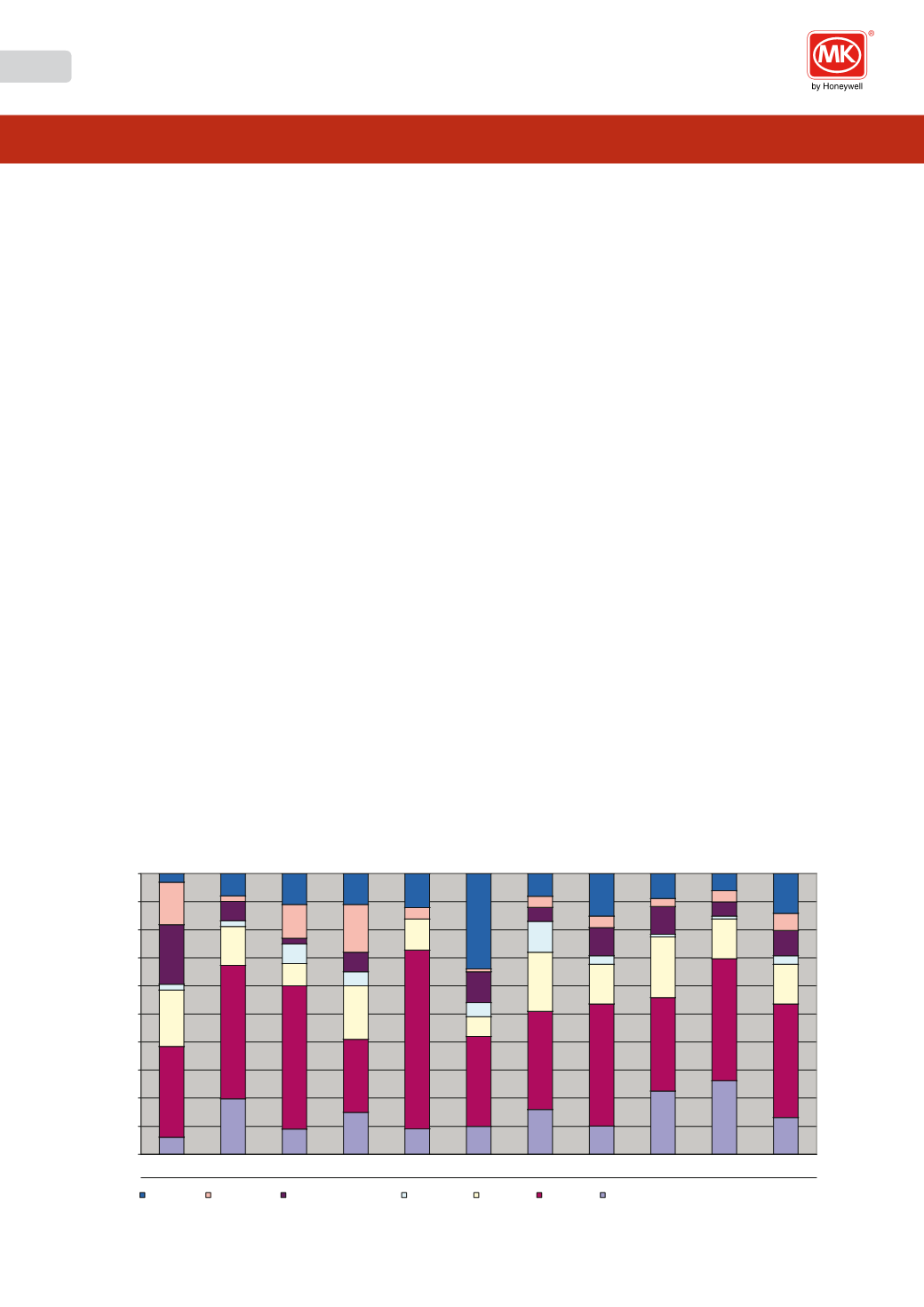

wiring devices
|
white
www.mkelectric.co.uk2
MK Sensors
Part L of the Building Regulations, Conservation of Fuel and Power
In April 2006 Part L was revised and reissued to ensure compliance with the legal obligations set out in the
legal obligations set out in the European Union Energy Performance of Buildings directive.
It was again revised in April 2010 due to changes in legal requirements and technical guidance.
Part L is only concerned with England and Wales. Similarly, other parts of the UK are addressing environmental
issues and the economic benefits of a more energy efficient building.
Three key areas are identified which can have a dramatic impact on power consumption and carbon dioxide
emissions:
l
Limiting heat gains and losses through thermal elements and other parts of the building fabric and from pipes,
ducts and vessels used for space heating, space cooling and hot water services.
l
Providing and commissioning energy efficient fixed building services with effective controls
l
Providing to the owner sufficient information about the building, the fixed building services and their maintenance
requirements so that the building can be operated in such a manner as to use no more fuel and power than is
reasonable in the circumstances
Why Stand Alone PIRs for Lighting Control?
The provision of effective and efficient lighting controls should be a key priority for contractors and specifiers
alike. The MK Sensors range offers products to assist customers in complying with the relevant building
regulations such as Part L, whilst also providing an energy conscious product choice.
Statistics published by the Building Research Establishment show that, across a broad selection of non-
domestic applications, lighting represents 40% of a building’s total energy consumption. Lighting was by
far the function with the highest energy usage, also representing the largest opportunity for energy savings.
MK Sensors not only help you and your customers realise the highest potential savings in energy
consumption, and thus to energy bills, but also offer the shortest payback periods.
Energy usage by application
6%
20%
9%
15%
9%
10%
16%
10%
23%
26%
13%
32%
48%
51%
26%
63%
32%
35%
43%
34%
43%
40%
20%
14%
8%
19%
11%
7%
21%
14%
22%
14%
14%
2%
2%
7%
5%
5%
11%
1%
21%
7%
2%
7%
11%
5%
10%
10%
9%
2%
12%
17%
4%
1%
4%
4%
4%
6%
3%
8%
11%
11%
12%
34%
8%
15%
9%
6%
14%
0%
10%
20%
30%
40%
50%
60%
70%
80%
90%
100%
Catering
Computing
Cooling and Ventilation
Hot Water
Heating
Lighting
Other
Commercial
Offices
Communication
and Transport
Education Government
Health
Hotel and
Catering
Retail
Sport and
Leisure
Warehouses
Other
Total
0%
3%
3%
5%
1%
3%
15%
Lighting Largest Portion
}
Source - devised from building research establishment dates – Office for National Statistics



















